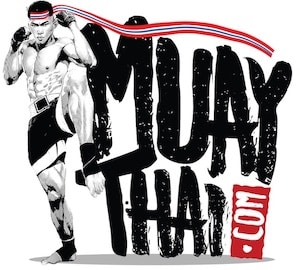I hate to say this, but ya read some ridiculous shite on this forum.
Can someone please tell me what "Muay Choa Chur" is supposed to mean? I've lived in Thailand for fifteen years, and have yet to hear it used once. Granted, I'm more partial to professional Muay Thai, but I also know more than a bit about the history. The only thing I can think of is that the term refers to Phra Choa Seua, the "Tiger King". Kun Luang Sorasak, or Phra Chao Seua, was a King during the Ayuttaya period. Legend has it that he fought incognito (commoners were not allowed to touch the King) and defeated some of the best boxers.The more famous boxer from the same period is Nai Khanom Dtom, who was captured by the Burmese and won his freedomby defeating their best boxers.
If I'm right, the term "Muay Choa Chur" is an exotic sounding (but mostly meaningless) name used to impress
gullible foreigners. Thais know foreigners fall for this sort of thing every time, and have therefore thrown in a few of the old
moves and thought up a great sounding name.
Don't be fooled. Professional Thai boxers are not taught the ancient system. The true "masters" of the old system (people who actually used it in competition) died long ago.
Caveat Emptor
Can someone please tell me what "Muay Choa Chur" is supposed to mean? I've lived in Thailand for fifteen years, and have yet to hear it used once. Granted, I'm more partial to professional Muay Thai, but I also know more than a bit about the history. The only thing I can think of is that the term refers to Phra Choa Seua, the "Tiger King". Kun Luang Sorasak, or Phra Chao Seua, was a King during the Ayuttaya period. Legend has it that he fought incognito (commoners were not allowed to touch the King) and defeated some of the best boxers.The more famous boxer from the same period is Nai Khanom Dtom, who was captured by the Burmese and won his freedomby defeating their best boxers.
If I'm right, the term "Muay Choa Chur" is an exotic sounding (but mostly meaningless) name used to impress
gullible foreigners. Thais know foreigners fall for this sort of thing every time, and have therefore thrown in a few of the old
moves and thought up a great sounding name.
Don't be fooled. Professional Thai boxers are not taught the ancient system. The true "masters" of the old system (people who actually used it in competition) died long ago.
Caveat Emptor


 no honestly, for a cofffee and a bark. Relax, 15 years is a long time to be in Thailand I have but been there for a year and I can hold a converstation in Thai no problem (I am, sorry to say, one of those guys who picks up languages like a duck takes to water) I have been travelling since 1997 so I am fuly aware of all the cons that abound in Asian countries. Anyway what the **** are you doing in Thailand for the last 15 years....? just out of curiosity.
no honestly, for a cofffee and a bark. Relax, 15 years is a long time to be in Thailand I have but been there for a year and I can hold a converstation in Thai no problem (I am, sorry to say, one of those guys who picks up languages like a duck takes to water) I have been travelling since 1997 so I am fuly aware of all the cons that abound in Asian countries. Anyway what the **** are you doing in Thailand for the last 15 years....? just out of curiosity.


Comment